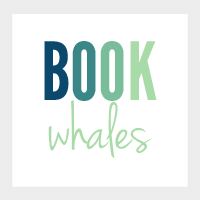On the eve of Princess Sophia’s wedding, the Scandinavian city of Skyggehavn prepares to fete the occasion with a sumptuous display of riches: brocade and satin and jewels, feasts of sugar fruit and sweet spiced wine. Yet beneath the veneer of celebration, a shiver of darkness creeps through the palace halls. A mysterious illness plagues the royal family, threatening the lives of the throne’s heirs, and a courtier’s wolfish hunger for the king’s favors sets a devious plot in motion.
Here in the palace at Skyggehavn, things are seldom as they seem — and when a single errant prick of a needle sets off a series of events that will alter the course of history, the fates of seamstress Ava Bingen and mute nursemaid Midi Sorte become irrevocably intertwined with that of mad Queen Isabel. As they navigate a tangled web of palace intrigue, power-lust, and deception, Ava and Midi must carve out their own survival any way they can.
Interview:
Giveaway Time!
Thank you Susan for the copies.
Two winners will win a Finished copy of The Kingdom of Little Wounds
Internationally
You want a signed Book Plates? First 10 to send her a SASE will get one.
First an EEEK!! from me, but here goes:
angsty: I worry all the time.
inquisitive: I write because I want to figure out why the World works as it does and why language has such power.
thwarted: I will never figure it all out, and I'd like to be a perfectionist--but I know perfection is impossible to come by.
headachey: I have chronic migraines from a couple of head injuries, and sometimes they make things very weird ... I get blind spots or see things that aren't really there. So the world becomes a little magical, a little scary.
magical: because the migraines make the world so strange, and because I've seen a lot of weird things. My great-aunt was the official spirit medium in a little Danish village called Gilleleje.
2. What inspired you to write about the book?
Sometime about fifteen years ago, a sentence came to me: "All the children in the royal nursery were sick." That line didn't make it into the book, but it was the original impetus--what would happen if all the royal children died, leaving the country without a clear heir? And what if someone who did survive was a girl; there would surely be war. I was thinking of Renaissance rulers such as Queen Elizabeth I and Mary, Queen of Scots--the whole Tudor/Stewart period was one of my hobbies in high school (I was a wee bit nerdy, perhaps). I was writing another book at the time, Breath and Bones, but I started taking notes and reading more Renaissance things and thinking of more nuances to the story ... I went to Venice, to see what it was like to walk around a city built on water (I must say, a gondola ride late at night is an eerie and wonderful experience). And my family is Danish, so it seemed natural to write about Scandinavia, a culture I knew pretty well.
Inspirations for other parts of the story grew organically. More important than setting, really, is the personalities involved. It was a patriarchal society, and men got to do as they pleased with women's bodies (for the most part), so I wanted to explore ways in which female outcasts--a disgraced seamstress, a mute slave, and a mad queen--might try to defeat a system that has institutionalized rape, for example. (Yes, I consider it rape when a thirty-five-year-old man marries a twelve-year-old girl, as happens early on.)
3. Tell us a little about Ava and Midi?
I think Ava, the seamstress, is the Everywoman character here. She's seventeen years old and expected a different life for herself; she was in love, and her lover vanished--leaving her pregnant. She had a very public miscarriage and is now considered "ruined," so her stepmother pulls some strings and gets her a position at the palace ... where Ava gets into trouble again, this time by accidentally pricking the queen with a needle. She falls under a conniving lord's control and eventually has to try to free her father from prison. I think there are a lot of strong, basic urges that we identify with--they're the same kinds of feelings and urges expressed in the short, dark fairy tales that pop up here and there (and that to me come in Ava's voice).
Midi, of course, has had a more unusual story. She doesn't even know where she's from, though she remembers her early years in a harem, where she had no mother but dozens of aunties. Her favorite was "poison-auntie," a medicine woman who could make potions to heal or harm. And when poison-auntie died, Midi ran after her body as it left the gates--and she was kidnapped, raped, and brought up north. She is angry, understandably so, especially as an owner has cut her tongue to prevent her from speaking. But she can write, and she has a lot of tools with which to be clever, to fight to save herself and the few souls she allows herself to love.
So if we were thinking of them as superheroes, Ava's weapons would be the needle and the fairy tales she tells; Midi's special weapons would be her intelligence and her ability to write. They see each other as enemies at first, but they have to find a way to work it out--which is difficult since Ava can speak but can't read, and Midi can write but can't speak.
4.What's your next project?
My current novel is set in the house where I live, which was built in 1920. It's a ghost story about a girl whose twin sister dies, leaving behind a fiancé. Flora, the main character, is in love with that fiancé and marries him, but she's forever haunted by doubts that he doesn't really love her ... and a suspicion that her twin has followed them into their new house and is controlling her family. I wrote an entire draft while I suffered from a couple of concussions, and I wrote the concussions into the story. I have chronic migraines as a result of the head injuries, so I use the migraines as triggers for entering the spirit world. I call it Novel with Occasional Concussions for now.
5. Pen or Pencil?
Oh, pen, always. Bic Rollerball, micro tip, blue. On yellow paper. But these days I do most of my composing on my laptop. Because of the injuries to my back, neck, and head, I have to lie down a lot, and this way I'm able to keep going. I can even write with my eyes closed, which helps stave off some headaches.
Not to be a downer. Let's consider this the triumph of the human spirit! And in fact, with all that pain and confusion in my head, and the utter inability to sleep, I wrote that first draft faster than anything I've done in my life. Revising has been much harder, as you have to be able to read and see to do that. Also I was dyslexic when I wrote the draft, so sometimes I don't know what I was trying to say. I was haunted ...
Giveaway Time!
Thank you Susan for the copies.
Two winners will win a Finished copy of The Kingdom of Little Wounds
Internationally
You want a signed Book Plates? First 10 to send her a SASE will get one.
















By far the best ideas come from such a small thing like a single sentence that stays with you for a decade. I'm very curious to read the end result, and btw, the cover is absolutely gorgeous.
ReplyDeleteWow, thank you! I think the cover is gorgeous too.
Deletewhat is a book plate?
ReplyDeleteIt's a sticky label that the author signs and sends to you. You peel off the back and stick it inside your book, so you can get a signature even without having to see the writer. I have some cool ones--you can see them on my website and email for one--susanncokal.net.
DeleteThis interview has me ready to read! Thanks for the enticing bits from what sounds like a fascinating book!
ReplyDeleteOh, thank you, Judith!!
ReplyDelete